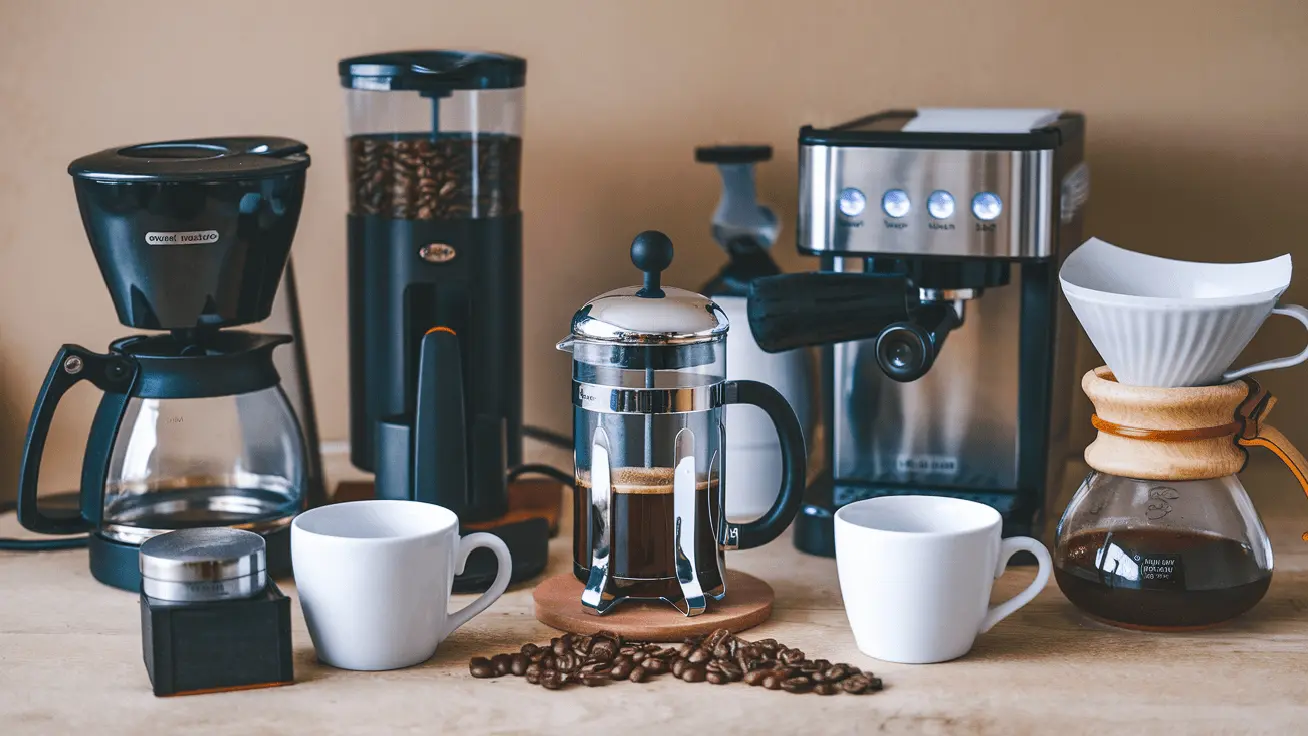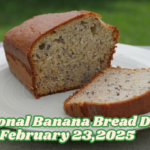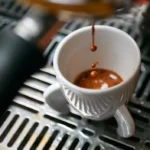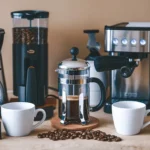Did you know a “cup” in your coffee maker is 5-6 ounces, while you might assume it’s one of the two standard sizes we all know, at 8 or 16 ounces?
Whether looking for the best coffee maker or the perfect coffee pot maker for an individual’s requirements, the range of options makes it difficult. From basic versions costing less than $20 to those premium espresso machines that cost over a thousand dollars, the selection is endless.
Your coffee maker is one of the most used home appliances, so it needs to fit your lifestyle perfectly. You’ll find everything from non-electric pour-over models to sophisticated machines with milk frothers and programmable settings.
We will guide you through these choices and help you find a coffee maker that fits your needs, space, and budget. Let’s explore how to choose a coffee maker that will serve you well for years to come.
Understanding Your Coffee Habits
Knowing which coffee maker to buy starts by understanding your daily coffee habits. Generally, one person consumes 2 cups of coffee per day, but that can be 5 or 6 in some cases. First, determine the number of people in your household who drink coffee and also their consumption patterns.
1. Daily Patterns of Coffee Use
For a coffee lover who only drinks alone, a small brewer might be enough. However, if you entertain guests frequently or have multiple coffee lovers at home, you will need a larger brewing capacity. In addition, every cup of coffee uses about 8 grams of coffee grounds, so factor this into your daily counts.
2. Counter Space and Storage
The amount of counter space usually determines which coffee maker will fit best in your kitchen. Keep these essential measurements in mind:
- Height clearance for lid opening
- Width for easy access
- Depth to ensure proper ventilation
- Space for accessories and coffee storage
Some coffee makers also require extra room for water reservoir filling or bean loading. Measure your available space carefully before making a final decision.
3. Budget Range and Long-Term Value
While basic coffee makers start under $20, high-end espresso machines can cost several thousand dollars. Also, consider these long-term factors:
- Availability of replacement parts
- Daily cleaning requirements
- Descaling needs to be done every 3-4 months.
- Additional accessories like filters and cleaning supplies
The best approach involves finding a balance between features and budget. Sometimes, investing more initially leads to greater satisfaction and durability. Consider programmable features if you value morning convenience, or thermal carafes if you drink coffee throughout the day.
Key Features of the Best Coffee Makers
Temperature control is the cornerstone of great coffee brewing without testing bitter. The best machines keep the water between 195 and 205 degrees Fahrenheit for that brewing cycle. Machines that arrive at that temperature within the first minute produce sweeter, more balanced cups.
1. Temperature Control and Brewing Technology
High-end coffee machines use PID controllers that ensure temperature variations of no more than a degree of Fahrenheit. The best models also allow customers to personalize the time used for brews and flow rates to simulate an almost precise pour-over brew. More impressively, SCA-verified machines always brew at perfect temperatures.
2. Capacity and Serving Options
The capacity options for the best coffee maker vary from single cups to 14-cup carafes. Thermal carafes are mainly better than glass carafes because they retain the coffee freshness and temperature of the coffee for as long as an hour. The multi-cup settings allow brewing specific volumes depending on your needs.
3. Convenience Features and Programming
Modern coffee makers come with advanced programming options that enhance the brewing experience. Smart technology enables control through smartphones, allowing you to:
- Set brew strength and temperature from a distance.
- Schedule brewing up to 24 hours in advance.
- Receive notifications when coffee is ready.
Self-cleaning capabilities detect calcium buildup and automatically rinse internal components. As a result, these features prolong the life of the machine and maintain the quality of the coffee. For optimal maintenance, descaling every 3-4 months ensures consistent performance.
Preheating plates have an associated bitter taste due to repeated exposure. Many models have charcoal water filters that remove impurities from the water, thus yielding a better taste of coffee. The most advanced models are designed with customizable settings on bloom time, brew temperature, and the rate at which water flows.
Comparison of Various Brewing Techniques
First of all, the selection of brewing methods determines your whole coffee experience. The brewing method you choose affects the flavor, strength, and overall satisfaction of your daily cup.
1. Drip vs. Pour-Over Coffee Makers
Although the principles are identical between drip and pour-over brewing, their implementation is otherwise highly dissimilar. Pour-over allows manual control of water flow for uniform saturation, so it makes a very full, balanced cup of coffee.
First and foremost, drip brewers benefit from ease of use via automation, and they are a preferred choice for more voluminous quantities. Pour-overs generally result in more full flavors and higher caffeine levels because the controlled water application and bloom time also contribute to that.
2. Single Serve vs. Full Pot Options
Single-serve brewers shine in convenience, allowing for fast preparation of individual cups. Traditional drip makers, on the other hand, usually brew larger batches, between 8 and 12 cups. Single-serve systems usually come with pod compatibility, although many now offer reusable filters for ground coffee. Full-pot options usually offer better value for multiple coffee drinkers or frequent entertainers.
3. Manual vs. Automatic Systems
The difference between manual and automatic systems goes beyond mere operation. Manual methods, like pour-over, require more attention but allow for control over brewing variables. On the other hand, automatic machines take care of everything with preset parameters. The cleaning requirements are also different: manual systems generally require simple rinsing, whereas automatic machines require regular descaling and internal cleaning.
Both methods require a medium grind size. This is perfect for the correct extraction without a bitter taste. Automatic machines tend to include programmable options and temperature controls, while manual ones require skill and attentiveness.
Main Maintenance Requirements
Maintenance of the coffee maker plays a crucial role in the functioning and longevity of the machine. A well-kept machine always offers better-tasting coffee and has a higher operational efficiency.
1. Cleaning Requirements Daily
Primarily, the everyday service is to clean up the used filters and grounds right after brewing. Then, clean the brew basket and carafe with warm water. For maximum hygiene, leave the reservoir lid and filter basket off between brews to allow evaporation of moisture in them. This simple care helps prevent bacteria multiplication and maintain the taste of the coffee.
2. Long-Term Care and Descaling
Mineral deposits from water gradually accumulate inside your coffee maker, which impacts both the taste and functionality. Thus, descaling becomes necessary every two to three months, or more frequently with hard water. Effective descaling is done using commercial descaling solutions or a solution of equal parts white vinegar and water. Descale for 30-60 minutes, followed by two complete brewing cycles using fresh water to flush out the solution.
3. Availability of Replacement Parts
After some time, some parts may wear out and need to be replaced. Some of the most common replacement parts include:
- Filter baskets and screens
- Carafes and carafe lids
- Water reservoir parts
- Gaskets and seals
Most manufacturers have replacement parts readily available, so your coffee maker will continue to function for years. In addition, universal replacement parts are often compatible with several brands and models. Maintenance and timely replacement of parts ensure that your coffee maker lasts longer and brews optimally.
What should I look for in a coffee maker?
Consider your daily coffee consumption, available counter space, budget, desired features like temperature control and programming options, and preferred brewing method. Also, think about long-term maintenance requirements and the availability of replacement parts.
What is the difference between drip and pour-over coffee makers?
Drip coffee makers are automated and convenient for brewing larger quantities, while pour-over methods offer more control over the brewing process, often resulting in a richer flavor. Pour-over typically allows for more even saturation of the grounds and can produce a slightly higher caffeine content.
How often should you clean and descale your coffee maker?
Clean daily by rinsing the brew basket and carafe in warm water. To descale, which removes mineral buildup, do this every two to three months or more often if you have hard water. You can use a commercial descaling product or a mix of equal parts white vinegar and water.
What is the best brewing temperature for coffee?
The best coffee makers maintain water temperatures between 195°F and 205°F in the brewing cycle. This range of temperature is necessary for optimal extraction and flavor balance in your coffee.










